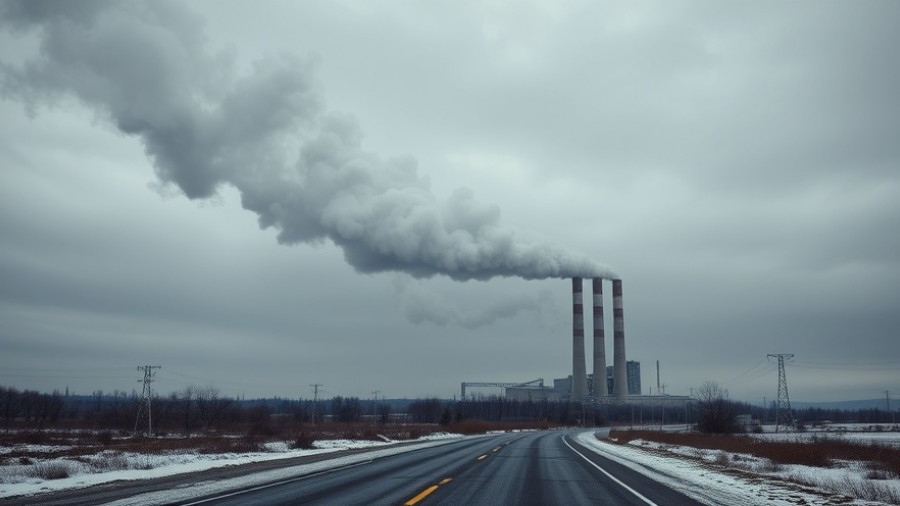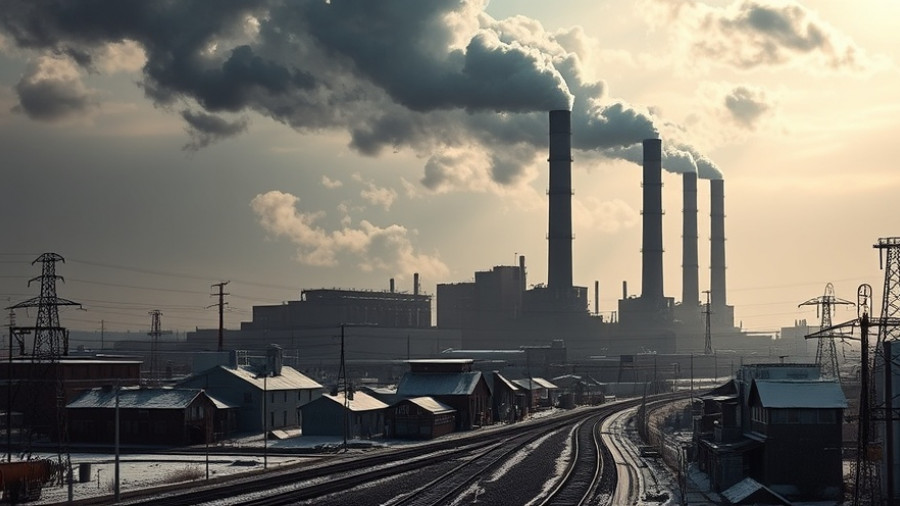
CO₂ Levels Surge: A Warning Sign for Our Planet
In what is being dubbed a climate emergency, the atmospheric concentration of carbon dioxide (CO₂) has surged to unprecedented levels in 2024, reaching an alarming average of 423.9 parts per million (ppm). This represents the largest single-year increase since measurements began in 1957, as reported by the World Meteorological Organization (WMO). Such impressive spikes underscore an urgent reality: Our planet is on a concerning trajectory toward accelerated climate change and severe weather extremes.
The Vicious Cycle of Climate Change
The implications of this record CO₂ rise extend beyond mere statistics. The WMO warns of a “vicious climate circle,” where rising temperatures hinder the Earth’s ability to absorb CO₂, exacerbating global warming. Typically, natural systems like forests and oceans act as carbon sinks, absorbing roughly half of human emissions. However, ongoing drought conditions, rampant wildfires, and changing ocean temperatures are weakening these critical carbon reservoirs.
For instance, the Amazon rainforest, vital for CO₂ absorption, has faced catastrophic wildfires and drying conditions, leading to additional CO₂ emissions while simultaneously reducing its capacity to sequester it. In 2024, many regions suffered severe droughts and fires, with significant consequences for both local and global ecosystems.
Comparative Increases: Past and Present
To grasp the urgency of our current situation, it’s essential to look at historical data: During the 1960s, CO₂ levels increased by an average of just 0.8 ppm annually. Fast forward to 2011-2020, and that yearly rise had jumped to approximately 2.4 ppm. This year, the increase tripled, highlighting not only a worrying acceleration but also a direct correlation with human activity, including fossil fuel combustion and land-use changes. These activities are driving our planet toward uncharted territory.
The Role of Methane and Nitrous Oxide
It's crucial to note that the rise in greenhouse gases isn’t limited to CO₂. Other potent greenhouse gases, such as methane (CH₄) and nitrous oxide (N₂O), also hit record levels in 2024. Methane, which continues to be released primarily through livestock farming and fossil fuel extraction, contributes a substantial portion to global warming, remaining in the atmosphere for about nine years. Meanwhile, nitrous oxide emissions, exacerbated by agricultural practices, increased by a quarter since pre-industrial times—a stark illustration of the multifaceted nature of our climate challenges.
The Importance of Accurate Measurements
As the climate summit COP30 approaches, the necessity for accurate measurement and monitoring cannot be overstated. Oksana Tarasova, a leading researcher at the WMO, emphasizes that without precise data, understanding the pace of climate change or implementing effective responses will remain elusive. This sentiment resonates deeply as countries gather to discuss and reformulate their climate policies.
The Path Forward: Urgency for Action
The WMO's report delivers a clear message: Reduced emissions, improved monitoring, and expedited actions are no longer merely suggestions but essential imperatives. As individuals, communities, and nations, our collective responsibility is to address these escalating challenges proactively. Every action counts—whether it's reducing reliance on fossil fuels, supporting sustainable practices, or advocating for robust policy changes.
Conclusion: What Can You Do?
Planetary health is intricately linked to our choices and actions. For environmentally conscious individuals, the call to action is incisive: champion sustainable living practices, engage in community advocacy, and stay informed about climate issues. By understanding the dynamics at play and taking informed action, we can contribute to the necessary solutions for our planet’s future.
Stay informed and take proactive steps toward combating climate change. Join our newsletter to receive the latest insights and updates directly to your inbox.
 Rij toevoegen
Rij toevoegen






Write A Comment